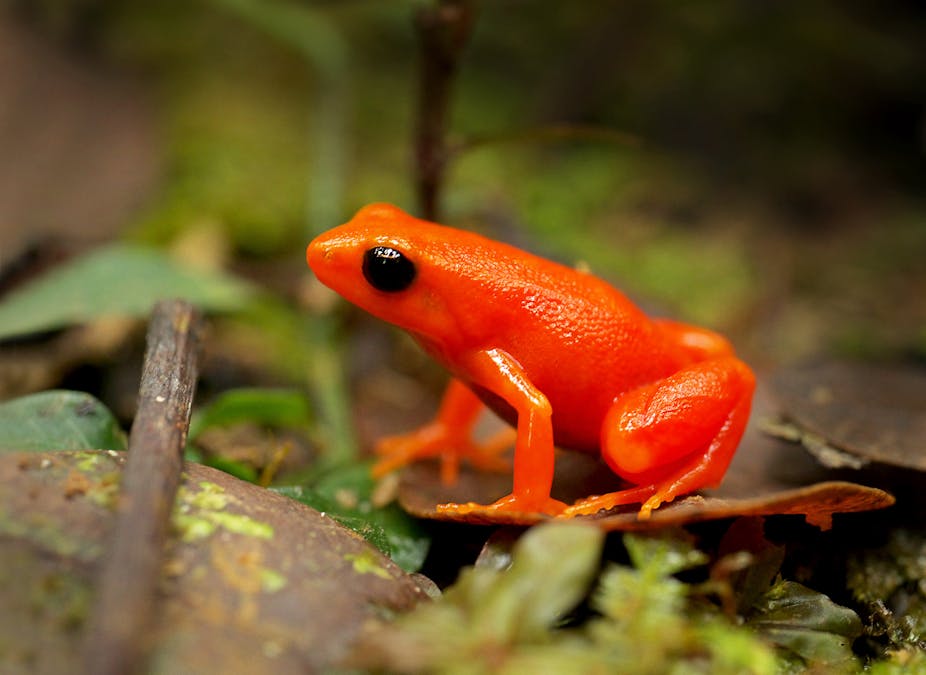The effects of climate change – extreme heat waves, wildfires of unprecedented magnitude and devastating floods – have now been occurring for several decades, and the COP26 climate agreement reached in Glasgow will not be enough to keep global warming below 2°C, as the French climatologist Benjamin Sultan recently said.
Species do not escape these disruptions. In a report from the IPBES, the equivalent of the IPCC for biodiversity, ecologists highlight dramatic declines in numbers throughout the world, including in regions which are apparently preserved.
Future projections are no better. Studies aimed at predicting the effects of climate change suggest there will be winners and losers, but mostly losers - not to mention the risks of invasion by the “winners”.
Although the idea of containing global warming to less than 2°C is making headway, that endeavour would nonetheless remain insufficient, as stressed in a study published in the leading journal Climate Change.
A clearer signal in the tropics
Climate change, as we can see, will cost us all, even in temperate regions. However, a growing number of studies show a gradient in the magnitude of species response to climate change. The closer to the equator, the more severe the effects. This is the case for example in European birds, with greater declines in the southernmost populations. The same pattern exists in the North American mountains, where birds track the cold toward higher altitudes, but it is mostly seen in the tropics.
This gradient was also observed in the body size of French passerines. A study that I completed with the French National Museum of Natural History (MNHN), now published in Global Change and Biogeography, showed that juvenile growth was negatively affected by high temperatures, but only in the south. I summarise this research with Benjamin Freeman (University of British Columbia) in the following rap song:
Species living closer to their tolerance threshold
How can such a pattern be explained? Are the southernmost species not adapted to warmer climates? Of course they are, but heat and drought still represent the main constraints in those regions. In the Mediterranean region, warming would increase aridity, and hence decrease plant production – the basis of the food chain. More heat, more aridity, fewer plants and fewer insects mean less food for birds during the spring.
What about the tropics, where the climate is wet? Species have also adapted to these climates, but the upper limit of their thermal tolerance is no different from that of temperate species. Tropical species live permanently close to this limit. Hence, a very slight shift in temperature may drive them beyond their physiological comfort zone.
Alarming projections
It is possible to anticipate the consequences of climate change using predictive models. After identifying the suitable climate conditions for a given species, ecologists make use of the future climate scenarios built by climatologists.
In a study carried out in collaboration with the University of Porto and the NGO Madagasikara Voakajy, these models predict a dramatic decline in climate conditions by 2070 for two species: a bright-coloured frog from Madagascar and a gecko, a sticky-toed lizard from Reunion Island.

Both species are restricted to a narrow region, with very specific climate conditions. The study accounts for a variety of sources of uncertainty, either related to the scenario or the methods. In every case, the climate will become largely unsuitable for both species, not only within their current distribution area, but also across their entire respective islands. Climate change can now be added to the long list of threats already pressuring their environment.
A glimmer of hope
Those models suggest that the ideal climate conditions for these species will no longer be met in the future. However, they ignore the species’ capacity to adapt to new conditions. Some species may modify their habits in order to avoid the warmest periods of the day (or year). Others may find micro-climatic refuges, either in the wild or in urban areas. It is also possible that those species may tolerate heat better than expected.
Conservation actions have already been undertaken in Reunion. The NGO Nature Océan Indien has planned restoration programmes for the natural habitat of the gecko. These steps enable climate risks to be anticipated by favouring the existing populations.
What is the point of all this if the climate becomes unsuitable in the future? The study enabled us to identify with a high degree of precision the areas that are predicted to be the most favourable in the future. The results will provide guidelines for conservation practitioners and help them to maintain or create suitable habitats which will represent a haven for this highly endangered lizard.
Because data is patchy, this study was conducted only on two species. However, such grim predictions could well become reality for a number of other tropical species. In short: this is another alarm bell in an overheated world.


